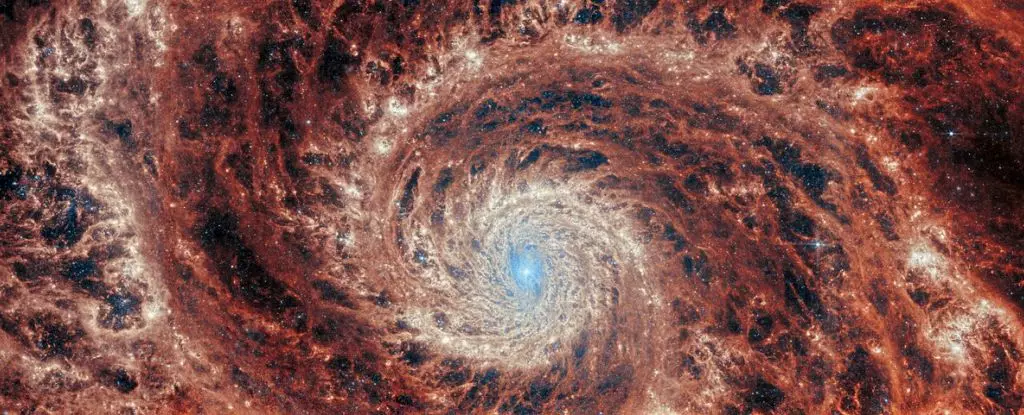The genesis of the Universe marks one of the most profound events in cosmology—the Big Bang, which occurred approximately 13.8 billion years ago. As the Universe began to cool and expand, primordial elements slowly began to coalesce to form stars and galaxies. For decades, astronomers and physicists have speculated about the evolutionary timeline of these galaxies. Recent advances, particularly through the lens of the James Webb Space Telescope (JWST), have yielded surprising revelations about the galactic landscape shortly after the Big Bang, now challenged by the discovery of a remarkable galaxy: Zhúlóng.
Discovered in data from JWST during its PANORAMIC survey, Zhúlóng—a name inspired by the Torch Dragon of Chinese mythology—stands as a paradigm shift in our understanding of galaxy formation. Researchers led by astronomer Mengyuan Xiao from the University of Geneva have presented compelling evidence that hints at the existence of a highly structured, ultramassive galaxy merely 1 billion years after the Big Bang, a period we commonly refer to as the Cosmic Dawn.
Zhúlóng astonishes not just in scale but also in its sophisticated morphology. Unlike the amorphous forms of lenticular galaxies, it bears the hallmark characteristics of grand design spiral galaxies. This classification reflects galaxies that possess prominently defined spiral arms emerging from a luminous, concentrated nucleus. This discovery ignites important discussions regarding the timeline of spiral galaxy formation and posits that complex galactic structures emerged significantly earlier than previously believed.
Astronomers have long grappled with determining when structured spiral galaxies first emerged in the Universe. Historically, evidence for such formations was scarce in the ancient cosmos; indeed, most spiral galaxies suitable for study are thought to be younger than 11.5 billion years. Zhúlóng, however, complicates this narrative. The newfound capability of JWST to visualize the distant Universe has unveiled a picture of an advanced spiral galaxy that may have formed much quicker than the gradual processes theorized by many cosmologists.
The implications of this discovery extend beyond mere chronology. The research team emphasizes that Zhúlóng’s features exemplify a mature galaxy that has undergone substantial processes of star formation and subsequent structural stability—attributes that challenge the existing models of galactic evolution. In their detailed paper, the researchers quantify Zhúlóng as exhibiting a striking quiescent-like bulge and active star-forming disk, with prominent spiral structures extending from its core to the periphery. This intricate design implies a far more rapid assembly than the timelines predicted for similar galaxies in today’s Universe.
Furthering the intrigue of Zhúlóng is its significant size—spanning approximately 62,000 light-years in diameter and boasting a mass akin to that of the Milky Way. The presence of a seemingly quiescent black hole at its core suggests a deceleration in star production, with estimates ranging from 20 to 155 solar masses annually. These characteristics not only highlight the galaxy’s complexity but also suggest that structures once presumed to take billions of years to evolve can emerge in a fraction of that time.
Zhúlóng is more than a singular discovery; it symbolizes a potential reconsideration of galactic formation timelines and structural evolution. It prompts a reevaluation of models that govern our understanding of the early Universe and the genesis of cosmic entities.
In light of the newfound insights brought forth by the discovery of Zhúlóng, the astronomical community is poised on the brink of a renaissance in the study of galactic formation. This extraordinary galaxy serves as evidence that the Universe’s history is more intricate than previously conceived. As we continue to delve deeper into the information captured by JWST, the potential for uncovering additional ancient galaxies looms large, promising to reshape our understanding of the cosmos. Ultimately, as we expand our grasp of the Universe’s past, we inch closer to deciphering our position within its unfolding saga.


Leave a Reply